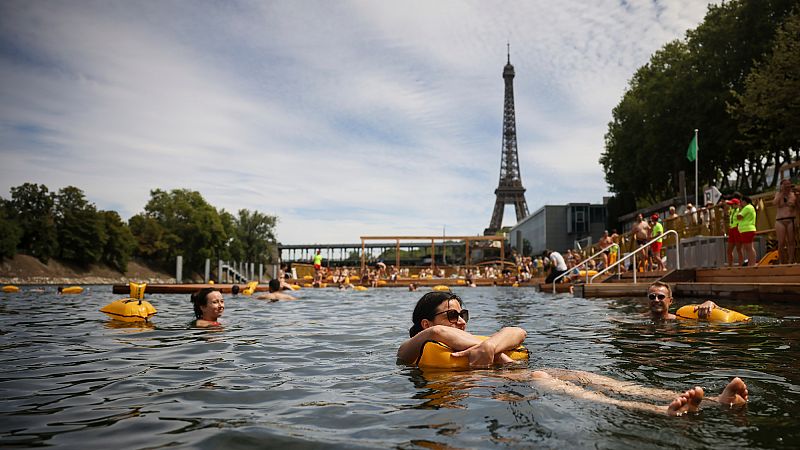A New Era for the Seine: Public Swimming Returns After Decades
After more than 90 years of restrictions, the iconic Seine River in Paris is welcoming swimmers once again. This historic moment marks a significant shift in how the city views its most famous waterway, which has now been transformed into a safe and accessible space for both athletes and the general public.
The return of swimming to the Seine comes after a major €1.4 billion clean-up project that aimed to restore the river’s ecological health. This ambitious initiative involved upgrading wastewater treatment systems, removing pollutants, and implementing long-term environmental strategies. The result is a dramatic improvement in water quality, making it possible for people to swim in areas that were once considered unsafe.
Three supervised bathing spots have been officially opened along the riverbank, each offering a unique experience for visitors. These locations include:
- Near Notre Dame Cathedral: This site provides a breathtaking view of one of Paris’ most recognizable landmarks while allowing swimmers to enjoy the river’s revitalized waters.
- By the Eiffel Tower: Located in one of the city’s most popular tourist areas, this spot offers an unforgettable opportunity to swim close to the iconic structure.
- In the City’s East: This third location is designed to provide access to the river for residents and visitors in the eastern part of Paris, ensuring broader community engagement.
Swimming in the Seine was officially banned in 1923 due to concerns over pollution and public health. Over the years, only rare exceptions were made, often for special events or competitions. However, with the recent improvements, the river is now deemed safe for recreational use under strict supervision.
Despite the progress, safety remains a top priority. Each of the three bathing sites has specific rules in place, including age limits and guidelines for proper behavior in the water. These measures are intended to ensure that everyone can enjoy the river without compromising their well-being.
The swimming areas will remain open until August, giving locals and tourists a chance to experience the Seine in a new way. Importantly, all activities at these sites are free of charge, making them accessible to a wide range of people.
This development is not just about recreation; it represents a broader commitment to environmental sustainability and urban renewal. By investing in the Seine’s future, Paris is setting an example for other cities facing similar challenges. The river is no longer just a historical landmark — it is becoming a vital part of the city’s cultural and social landscape.
As the summer season approaches, the opening of these bathing spots is expected to draw large crowds. With ongoing efforts to maintain the river’s cleanliness, the Seine is poised to become a symbol of resilience and transformation. For many, this marks the beginning of a new chapter in the relationship between the people of Paris and their beloved river.







